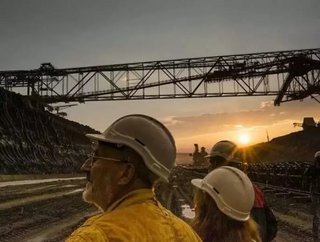Analysts: Mining industry needs $150 billion to meet demand or face shortages

Analysts from commercial intelligence firm Wood Mackenzie believe the mining industry needs to invest $150 billion to meet the medium to long-term demand for commodities.
In a prepared presentation last week at LME Week in London, Wood Mackenzie’s Vice Chairman of Metals and Mining research, Julian Kettle, cited challenges of lower commodity prices, pressure from shareholders to curtail investment and a new reality of lower demand growth.
• Related content: Report: uranium could provide $9.5 billion in economic benefits to Australia
"Across base metals, iron ore and steel Chinese consumption growth rates are set to fall dramatically in the next five years, compared with the previous half decade. However, we caution against this being interpreted as a bleak outlook – Chinese consumption hasn't hit a great wall,” said Kettle.
“The scale effect, ie the sheer volume, still translates into significant incremental demand and good growth in tonnage terms. China will account for between 58-69 percent of global total demand growth for base metals over the next decade.”
To combat this, Kettle believes the industry would need to invest more than $150 billion or face shortages.
Deloitte Access Economics noted the slump in commodity prices and related profits meant “the chance of new mining and energy construction projects getting the go-ahead any time soon continues to fall.”
• Related content: [PHOTOS] 10 minerals that make modern life work
The massive job-creating construction phase of Queensland’s LNG projects were also finishing up, he said.
“This need for investment is becoming desperate in zinc and lead and will become an issue in copper in the next few years. Unfortunately there is little appetite to invest with prices cutting into the cost curve, low free cashflow, surpluses building, difficulty in financing and shareholders demanding dividends.”
Wood Mackenzie analysis revealed that, across base metals, further production cuts were needed to ensure output was economic at current prices.
Aluminum

"In aluminium, we have the all-in price showing around 60 percent of the Chinese smelters are lossmaking at current price levels. But, in China, State support and the need to generate value-added tax receipts and power cross-subsidies will mean cutbacks will be a long time coming,” said Kettle.
Nickel

“In nickel, we conclude that 55 percent of the industry is loss making on a cash basis at current price levels, but there appears to be little appetite to cut,” Kettle said. The market is focusing on the slow pace of Indonesian nickel pig iron development and nickel stock drawdown over the next three to four years rather than high above ground stocks unavailable to the market.
Copper
“We're expecting a further 400,000 tons to 500,000 tons of cuts to offset the ramp-up of projects and to prevent surpluses building significantly. If more curtailments are not forthcoming, prices will test marginal (ninetieth percentile) costs of $2/lb,” he cautioned.
Zinc
"In Zinc, prices had held up much better with only a very low percentage (around 10-15 percent of zinc miners are losing cash at current price levels) losing money on a cash basis at current prices. Prices would have to be much lower to precipitate more cuts yet the market is relatively balanced and trending to deficits until 2019 so one questions the need for cuts from a fundamental perspective," said Kettle.
Stay connected! Follow us on Twitter and like us on Facebook
- Brightstar, Eldridge and Claure acquire AusencoSupply Chain & Operations
- First Quantum contracts with MECS to cut emissionsSupply Chain & Operations
- Tin production at Andrada Mining reaches record levelsSupply Chain & Operations
- Ternium plans to build US$3.2bn steel plant in MexicoSupply Chain & Operations








